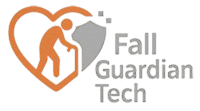Debunking fitness myths, understanding US activity guidelines, and practical tips to improve functional fitness at any age—especially for seniors—through light exercise and daily movement.
💡 1. Defining “Being in Shape”: It’s Personal
- 🗣️ Your Goals Define It: “Being in shape” is subjective and deeply personal. For this author, exercise is “life” – a non-negotiable tool for longevity and disease prevention (“exercise is medicine”).
- 👥 Real-Life Goals Matter: Many clients prioritize “movement for life”: reducing fall risk, recovering from surgery, building strength before a joint replacement, or simply lifting a grandchild. “Being in shape” here equals functional independence.
- **⚖️ The Muscle Balance Imperative**: A truly fit body means muscles are strong, responsive, and work together seamlessly like “a well-oiled machine.” Muscle imbalances pull bones closer, causing joint pain and misalignment, forcing other muscles to compensate, eventually leading to systemic “dysfunction.”
📊 2. How Much & What Kind of Exercise? The US Guidelines & Reality
- 📋 The Official US Recommendations:
- 🇺🇸 US Physical Activity Guidelines: Adults need at least 150 minutes of moderate-intensity (or 75 mins vigorous) aerobic activity weekly, plus muscle-strengthening activities (like weights) on 2+ days. Older adults (65+) should add balance-improving activities. (Similar to Canada and evolving global standards).
- **❗ Real Talk: Not Everyone Needs (or Can Do) Intense Workouts**: While the 150-minute goal is ideal, it’s unrealistic or even unsafe for many older adults or beginners.
- 🎯 Every Minute Matters – Especially the First: Crucially, ”every minute counts, especially that very first minute.” As Dr. Robert Wood emphasizes, ”Those who stand to gain the most from physical activity are often the least active.”
- 🚶♀️ The Power of Walking: The most popular exercise for good reason—it’s simple and free. While 10,000 steps is a common target, research shows averages for adults 60-79 (approx. 7,000-7,900/day) lag behind younger groups (approx. 8,700-10,000/day).
- **⚠️ Fall Prevention is KEY**: Reduced activity spikes fall risk. Fighting this requires focusing on balance, strength, and mobility.
- **❓ Self-Check**: Ask yourself: “Can I cross the street before the light changes?” “Can I lift my foot to step over a curb?” “Can I get in/out of a chair without help?” If “no” to any, incorporating light exercises can significantly help.
🌟 3. Surprising Benefits of Light Physical Activity
- 📈 Activity is a Spectrum, Not Extremes: Pitting frail elders against bodybuilders overlooks the vast majority in the middle. The reality is a continuum.
- 🔢 The RPE Scale (Rate of Perceived Exertion): Professionals often use a 1-10 scale (1 = standing still, 10 = max effort).
- **✅ Light Activity’s Proven Value**: Many clients operate in the lower ranges (the “health gain zone”). Research shows light physical activity offers benefits for older or sedentary individuals comparable to the effects of vigorous exercise on younger, fitter populations.
🧼 4. What Counts as Exercise? Integrating Movement Into Life
- 🌎 WHO’s Broad Definition: The World Health Organization defines physical activity as “any bodily movement produced by skeletal muscles that requires energy expenditure.” It doesn’t mandate sweat, gym clothes, “the burn,” or a gym membership! Any movement delivers benefit.
- 🧹 Household Chores = Legit Exercise:
- Vacuuming: Involves pushing, pulling, lifting – especially stairs? That’s strength training!
- Dusting/Window Washing: Reaching away from your center is dynamic balance & flexibility work.
- Mopping: Vigorous scrumping gets your heart pumping – qualifying as moderate-to-vigorous cardio! ✅
- This is free functional movement building muscle and bone.
- **⬆️ The Staircase Advantage**: After an 80-something widow moved into a multi-story townhouse, worried relatives feared stairs “would be the death of her.” She countered: “These stairs are going to keep me alive! Every time I go up and down, I’m getting stronger and keeping my balance.” Stairs are a fantastic, free tool: working legs and balance (dynamic stability), boosting cardio, loading bones with bodyweight, and demanding muscle power step after step.
